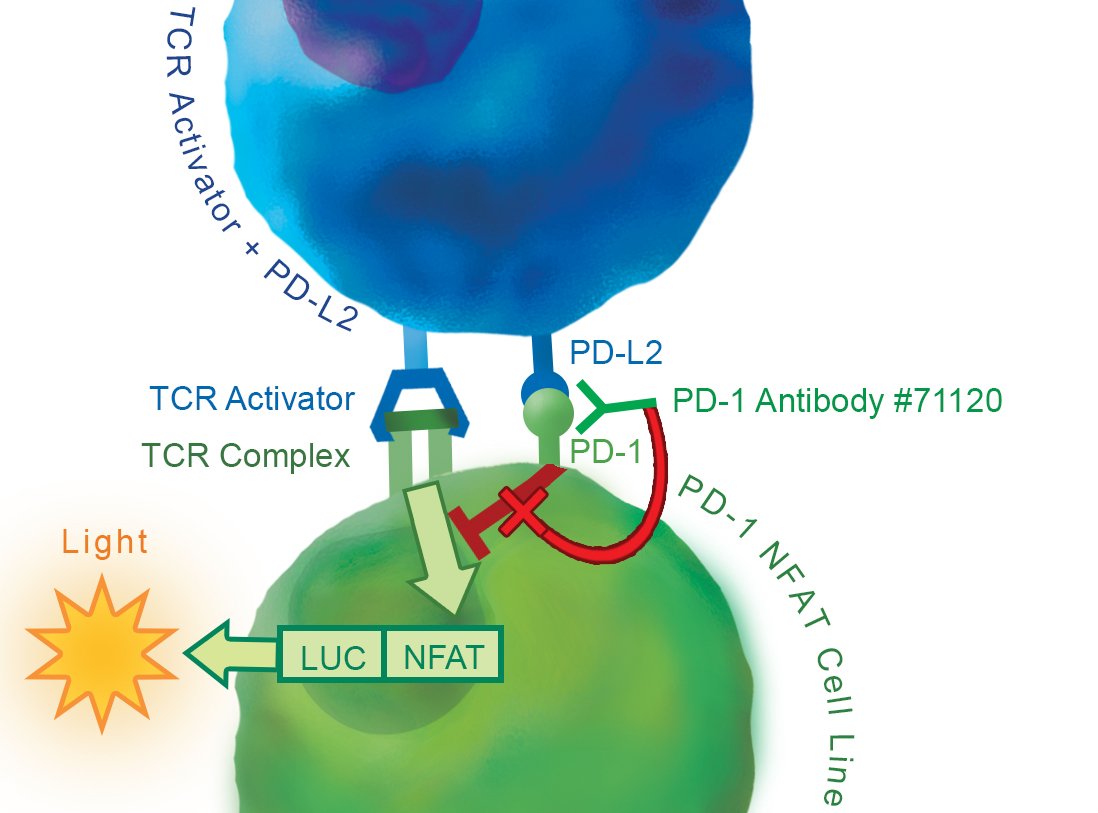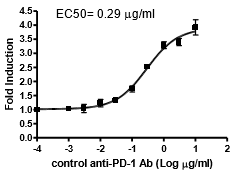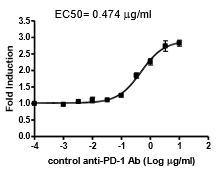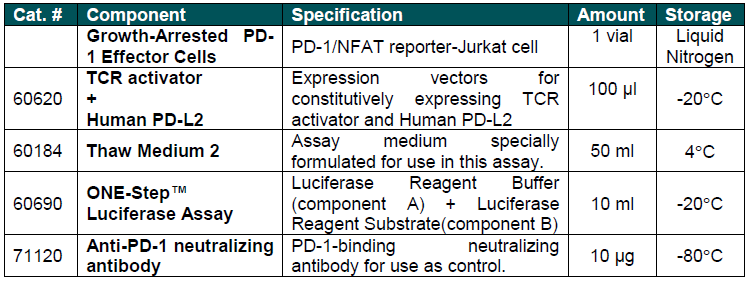●
Description
The PD-1/PD-L2 Inhibitor Screening Cell-Based Assay is a bioluminescent cell-based assay that can be used to screen and profile inhibitors of the PD-1:PD-L2 interaction. The assay consists of two main components:
• Growth-Arrested PD-1 Effector cells (PD-1/NFAT reporter-Jurkat cells): Reporter Jurkat T cells expressing firefly luciferase gene under the control of NFAT response elements and also constitutively expressing Human PD-1. These cryopreserved cells are provided in a thaw-anduse format that does not require cell propagation. These cells are modified not to be expanded and are intended to be used in a single experiment.
• Expression vectors for TCR activator and Human PD-L2: Transfection-ready vectors are used to transfect cells to create the target cells that overexpress PD-L2 and an engineered cell surface T cell receptor (TCR) activator.

Purchase of this cell line is for research purposes only; commercial use requires a separate license. View the full terms and conditions.
●
Synonyms
Programmed Cell Death 2 Ligand 2, PDL2, PD-L2, CD273, PDCDL1G2, B7-DC, activity assay kit, cell based kit, cell-based assay
Product Info
Storage and Usage
Citations
Supplied As
Each kit contains sufficient reagents for 100 assays using a 96-well plate.
Materials Required But Not Supplied
• HEK293 cell and its growth medium (Thaw medium 1, #60187) or other cell lines
• Transfection reagent for mammalian cell line [We use Lipofectamine™ 2000 (Life technologies #11668027). However, other transfection reagents work equally well.]
• Opti-MEM I Reduced Serum Medium (Life technologies #31985-062)
• 96-well tissue culture-treated white clear-bottom assay plate
• Luminometer
Background
Programmed Cell Death Protein 1 (PD-1) is a receptor which is expressed on activated T-cells. Binding of PD-1 to its ligands, PD-L1 and PD-L2, negatively regulates immune responses. The PD-1 ligands are found on most cancers, and PD-1: PD-L1/2 interaction inhibits T cell activity and allows cancer cells to escape immune surveillance.
Storage/Stability
Store cell line in liquid nitrogen immediately upon receipt. Store other components as described below. Stable for at least 6 months from date of receipt when stored as directed.
Instructions for Use
See assay kit data sheet for detailed protocol.
Shipping Temperature
-80°C
Warnings
Avoid freeze/thaw cycles.
Disclaimers and Limitations
BPS Bioscience assay kits are validated using the listed components according to our specific protocol. Any deviations to kit components or protocols, such as using different proteins, cell/tissue lysates, or buffers (including using the same component from other commercial sources) will void any warranties on the performance of the assay kit and is not recommended.
End-users should immediately report any issues to
[email protected] upon receipt of the kit, such as missing components, damaged vials, no dry ice, etc.
Scientific Category
Immunotherapy
Regulatory Status
Research Use Only





